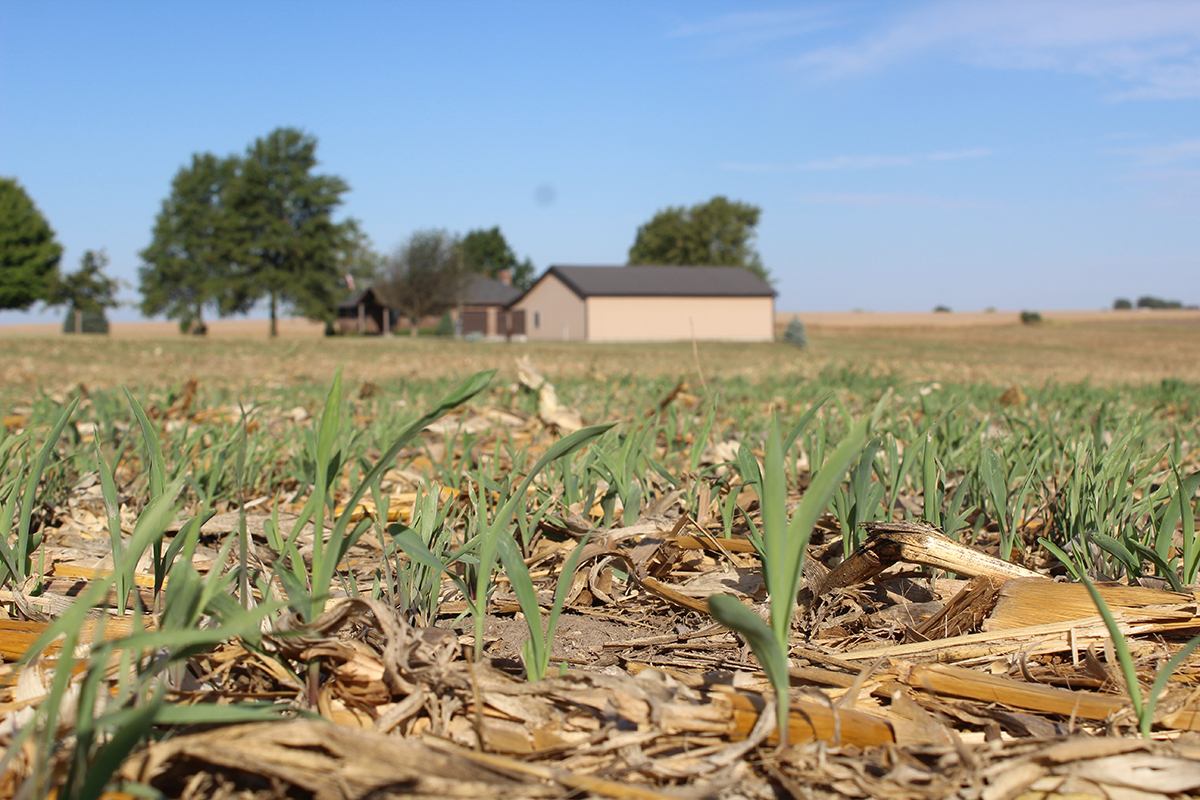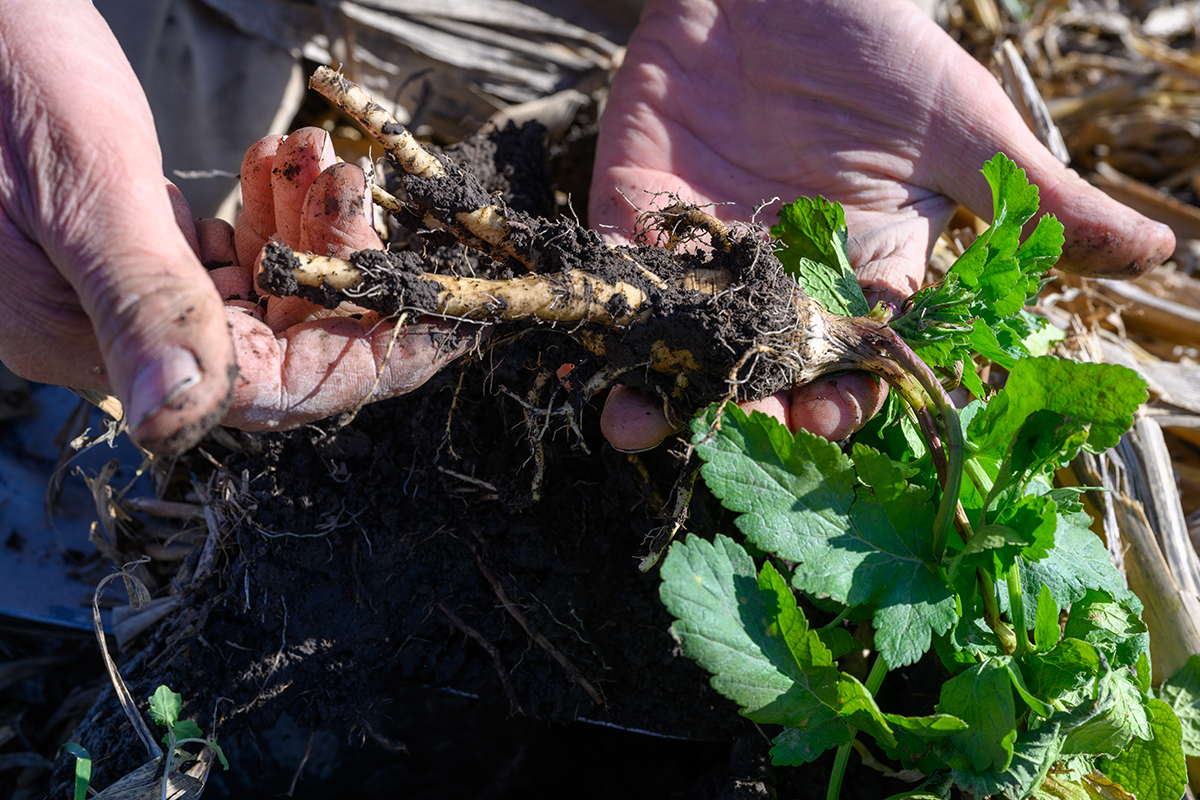How to Measure Cover Crop Success

The following is article two in a three-part series on cover crop implementation and management strategies. You can find article one in the series by clicking here.
Evaluating the benefits of cover crops can be more complex than growing the crop itself.
We asked Rob Myers, Ph.D., for ways farmers can determine the effectiveness of cover crops. Myers is the regional director of extension programs for North Central Sustainable Agriculture Research and Education and director of the Center for Regenerative Agriculture at the University of Missouri.
Evaluate Soil Health
Cover crops improve soil health by adding organic matter, increasing soil fertility and improving soil structure. Farmers can measure soil health by exploring various soil parameters such as soil organic matter, pH, nutrient content and aggregate soil structure. Each parameter plays a crucial role in overall soil health.
“Cover crops do impact soil organic matter, but it takes time. It’s not something you will see immediately. It may take three to five years before you can detect that difference from a soil health measurement,” said Myers. “A faster way to evaluate the benefit of cover crops to soil health is through microbial biomass in the soil, and that could positively change in a single year, but cover cropping is a long-term project to receive the most soil health benefits.”
Determine Weed Suppression
Weed suppression is a key benefit of cover crops. Cover crops compete with weeds for light, water and nutrients. Farmers can analyze the success of weed suppression by scouting weeds in fields where cover crops were applied and fields where they weren’t. By comparing these fields, farmers can determine if cover crops are reducing weed populations, which could lead to fewer herbicide applications.
“Weed suppression is something you can see pretty quickly with cover crops. Some farmers say they can reduce their herbicide costs because the cover crop has helped reshape their weed management program. Rather than spraying post-emergence twice, they may only need one treatment,” said Myers.
Assess Erosion Control
Cover crops also reduce erosion by holding soil in place and improving soil structure. There are tools such as sediment traps or erosion pins that help farmers to assess erosion on their fields. However, a quick assessment can be made by driving around farmers’ fields during heavy rainfall events and observing the runoff from the fields.
Evaluate Nutrients
Some cover crops, such as winter peas, are capable of fixing nitrogen that can be used by the soybean crop later in the season. Farmers are encouraged to use soil sampling. Soil sampling gives farmers a clear picture of what nutrients crops will need in the future. Over time, hopefully a farmer can reduce the amount of fertilizer inputs due to the incorporation of cover crops. Note that cover crops are known to slowly release nutrients back into the soil as the plant tissue breaks down, so initial soil tests might not tell the whole story.
Determine Impact on Crop Yield
Ultimately, the success of planting cover crops earlier in the year will depend on their impact on soybean crop yield. Farmers should track soybean yield and compare it to previous years to determine if cover crops are impacting crop productivity. Yield measurements should be taken from various areas to get an accurate representation of the crop’s overall productivity.
“There is a lot of misinformation about the yield impact of cover crops. What we have learned from surveys is that during the first year, on average, there is relatively little impact on yields. Individual fields may react differently, positively or negatively. In years three and four of using cover crops, we consistently see a slight but significant benefit to yield. In tough weather years, like a drought or too much rain, the cover crop can pay off bigger with yield if managed appropriately,” added Myers.
Conclusion
Cover crops can be a valuable tool for improving soil health, reducing erosion and increasing crop productivity, and it is important to measure their success. Successful adoption of cover crops is a long-term game, but by consistently evaluating soil health, weed suppression, erosion control, nitrogen fixation and crop yield, farmers can determine with clarity if cover crops are providing the intended benefits to their farms.



